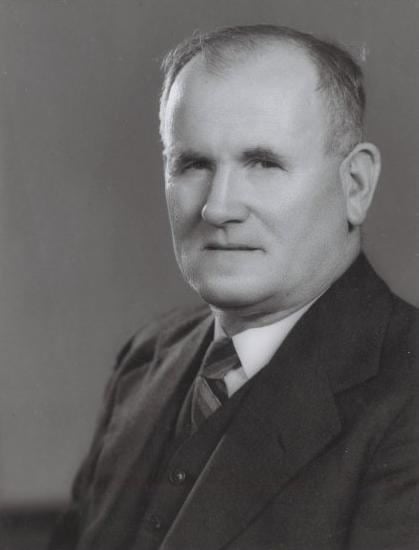Nationality British Died December 9, 2001 | Role Geologist Name Frederick Stewart | |
 | ||
Born Frederick Henry StewartJanuary 16, 1916 ( 1916-01-16 ) Spouse Mary Stewart (m. 1945–2001) | ||
Notable awards Royal Society (1964) | ||
Sir Frederick Stewart (16 January 1916 – 9 December 2001) was a Scottish geologist, who worked in industry and academic research. He retired as Professor Emeritus in Geology at the University of Edinburgh.
Contents
Background
Stewart's father was a lecturer in engineering at Aberdeen University.
He was born in Aberdeen, and educated at Fettes College and Robert Gordon's College. He studied zoology for three years at Aberdeen University, before switching to geology, and studying at Emmanuel College, Cambridge as a postgraduate. While there, he studied the geology of the Isle of Skye and the village of Belhelvie, in Aberdeenshire.
Early career
In 1941, Stewart joined ICI's research division as a mineralogist. The outbreak of World War II meant that access to previous sources of many raw materials (including German potassium) were cut off. As a result, previously uneconomic deposits, but that were located in Britain and therefore more accessible, were explored, and Stewart found a deposit of potassium salts in North Yorkshire. It had many uses in industry, such as in cement, glass, metal finishing, disinfectants, fertilisers and dyes. The discovery brought recognition for Stewart from both the Geological Society of London and the Mineralogical Society of America - the latter group's interest due to the similarity of the Yorkshire deposits to those in New Mexico and Texas.
Academic career
He lectured in geology at Durham University between 1943 and 1956, moving to Edinburgh as regius professor of geology and mineralogy in 1956. He remained at Edinburgh for the rest of his career, retiring as professor emeritus in 1982. Subsequently, he served as a trustee of the Natural History Museum from 1983–87.
Stewart built the university's institute of geology into a centre with an internationally recognised reputation, and was helped by the science's higher profile than had previously been the case. Within 10 years, he had obtained funding to build and equip a world-class experimental petrological unit, designed to examine the behaviour of rocks within the earth's mantle when subjected to high pressure and temperatures. The results of its research was used in the North Sea drilling, and the laboratory was among those chosen by Nasa to analyse the first samples of lunar rock, because it allowed the simulation the conditions of the lunar surface.
In 1965, Stewart became dean of the faculty of science, and oversaw the growth of studies in geophysics and microbiology, as well as the development of integrated biology and engineering science. He also persuaded the government's natural environment research council (NERC) to support the creation of a new institute of geological sciences for Scotland at the King's Buildings - the university's science faculty. In 1971, he was made chairman of NERC.
In 1967, Stewart joined the government's council for scientific policy.
In 1973, he became a member of the advisory board of research councils, becoming chairman a year later. For six years, he advised the successive secretaries of state for education and science (Fred Mulley, Reg Prentice, Margaret Thatcher and Shirley Williams) on science policy, and what the annual £500m research and higher education training should be spent on.
Retirement
Stewart retired in 1982 to the Argyll village of Loch Awe. He collected fossils from unusual minerals as a hobby, and also discovered the largest sapphire – three inches long – found in Scotland, and put it on display in the national museum.
Personal life
In 1945, Stewart married Mary Rainbow, (later to achieve recognition as the novelist Mary Stewart) whom he met while working at Durham. She survived him between his death at the age of 85 in 2001, and her own in 2014. There were no children.
Legacy
Stewart has been described as 'one of those exceptional individuals for whom the word polymath was minted.' His professional life coincided both with an increase in geology's profile, and the moment that science policy became more widely publicly debated, as a result of the development of the discipline of plate tectonics, as well as geology's economic value, particularly in the fields of the development of North Sea oil and lunar and interplanetary exploration, both of which were growth industries at the time.
